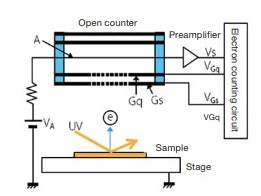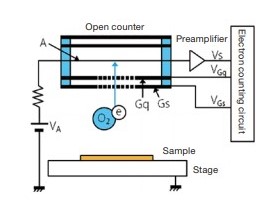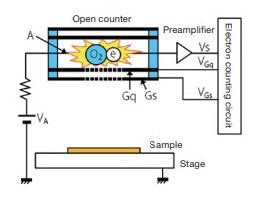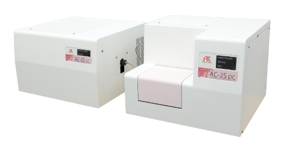Principles of photoemission yield spectroscopy in air (PYSA)
An atmospheric photoelectron yield spectrometer is a surface analysis system incorporating a special counting tube known as an open counter to count photoelectrons emitted when a substance surface is irradiated with UV light under atmospheric conditions. Fig. 1 gives a system overview.

Fig.1
White UV light (UV light containing a mixture of photons with different energy) emitted from a light source is spectrally diffracted by a spectrometer so that gray UV light (i.e., only photons with uniform energy) is incident on the sample. The spectrometer is controlled to increase photon energy. Once the photon energy exceeds the work function of the sample substance, photoemission occurs from the sample substance. These emitted photoelectrons are counted by the open counter. A graph plots photon energy against the measured photoelectron count (Fig. 2).
In Fig. 2, the horizontal axis represents the energy of the incident UV photoelectrons (referred to here as the incident UV energy). The vertical axis represents the photoelectron yield (photoelectron count per second). This graph typically becomes parabolic, so the vertical axis is set as the square root of the photoelectron yield to obtain a linear graph. This makes it easier to calculate the threshold energy and slope at which photoelectron emission starts. This threshold energy corresponds to the energy required to remove just one electron from the surface of the sample substance, and can be interpreted as work function or ionization potential. The slope is an indicator of photoemission.

Fig.2

Fig.3









